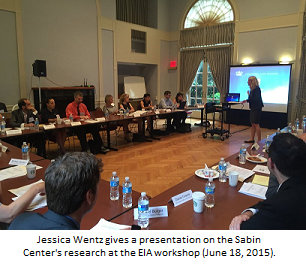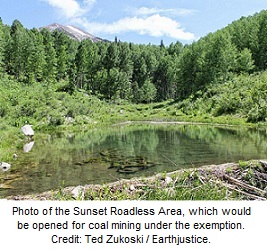 Jessica Wentz
Jessica Wentz
Associate Director and Postdoctoral Fellow
Climate change and its effects on temperature, precipitation, storm patterns, sea level rise, and other environmental processes have important implications for the construction, maintenance, and operation of buildings and infrastructure.
Recognizing this, the Obama Administration has issued several executive orders directing federal agencies to prepare for the impacts of climate change on federal operations and facilities.[1] The Council on Environmental Quality (CEQ) has also issued draft guidance directing federal agencies to account for these impacts when conducting environmental reviews under the National Environmental Policy Act (NEPA).[2] As noted in a previous blog post, CEQ’s draft guidance clarifies that agencies have an existing legal obligation under NEPA to consider “the ways in which a changing climate over the life of the proposed project may alter the overall environmental implications of such actions.”[3] A variety of other jurisdictions have issued similar guidance, directing project proponents to evaluate climate risks and adaptation opportunities in environmental impact assessments (EIAs).[4]
Last week, the Sabin Center convened a workshop to discuss the development of model protocols that agencies can use to assess the potential impacts of climate change during NEPA reviews of public infrastructure and buildings. Representatives from federal, state and local agencies, EIA consulting firms, and public interest organizations attended the workshop, providing their perspective on how climate-related considerations currently factor into the EIA process, whether model protocols would be useful in this context, and what they might look like. The participants generally agreed that EIA documents should include an assessment of climate change impacts and that model protocols would provide a useful template for conducting such assessments.
The participants also provided detailed feedback on a set of draft protocols that we circulated in advance of the workshop. These protocols would supplement the CEQ guidance by providing more explicit instructions on how to evaluate:
- Future baseline: The manner in which climate change may influence the baseline environmental conditions which would exist in the absence of the proposed action (the no action alternative).
- Purpose and need for the project: Whether climate change may influence the need for the proposed project or the ability of the project to fulfill its intended purpose.
- Impact on affected environment: The extent to which climate change may increase the vulnerability of the affected environment and any natural and human resources located within that environment.
- Project vulnerability and resilience: The vulnerability of a project to climate change and the resilience of design features, construction materials, performance and operational processes, and decommissioning processes.
- Implications for the environmental consequences of the project: Whether the impacts of climate change may alter the nature or magnitude of environmental impacts associated with a project.
We are now in the process of revising the protocols before soliciting additional input from other stakeholders, including the federal agencies that were not represented at the workshop.
To help inform the development of these protocols, the Sabin Center conducted a survey of existing guidance documents from other jurisdictions and non-governmental entities. The results of that survey are available here. We are also conducting a follow-up survey of climate change considerations in federal environmental impact statements (EISs) published between 2012 and 2014, which will supplement our survey of EISs prepared between 2009 and 2011. The results of the updated survey will be available on our NEPA resources page by the end of this summer.
If you would like to learn more about the proposed protocols or have any recommendations for this project, please contact Jessica Wentz, jwentz@law.columbia.edu.
[1] Executive Order 13693: Planning for Federal Sustainability in the Next Decade (2015); Executive Order 13690: Establishing a Federal Flood Risk Management Standard and a Process for Further Soliciting and Considering Stakeholder Input (2015); Executive Order 13677: Climate-Resilient International Development (2014); Executive Order 13653: Preparing the United States for the Impacts of Climate Change (2013); The President’s Climate Action Plan (2013); Executive Order 13547: Stewardship of the Ocean, Our Coasts, and the Great Lakes (2010).
[2] Revised Draft Guidance for Federal Departments and Agencies on Consideration of Greenhouse Gas Emissions and the Effects of Climate Change in NEPA Reviews, 79 Fed. Reg. 77,802 (Dec. 24, 2014).
[3] Id. at 77,825.
[4] Massachusetts, for example, adopted a 2009 amendment to its EIA statute to require consideration of climate change effects such as sea level rise. See Mass. Gen. Laws ch. 30, § 61. 301. Massachusetts also recently published a draft policy on how agencies should implement this mandate. See Commonwealth of Massachusetts, Draft MEPA Climate Change Adaptation and Resiliency Policy (Jan. 2015).



